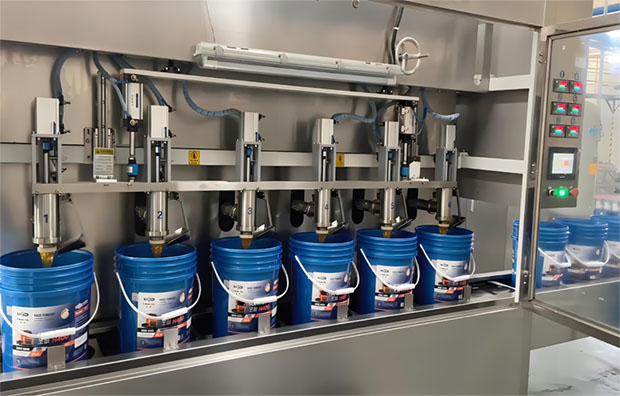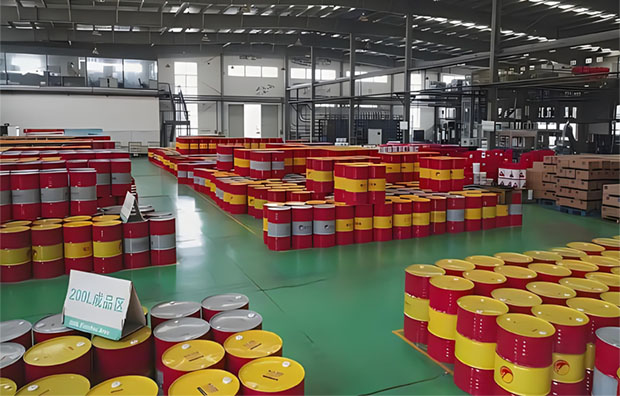Lubricant Production Process
Lubricant Production Process
Description of Each Process:
1. Base Oil: Base oil is the main component of lubricants, accounting for approximately 85-95% of the total mass. It is stored in oil tanks and pumped into blending tanks through the oil pump in the blending workshop.
2. Additives: Additives are another main component of lubricants, accounting for about 5-15% of the total mass. They are stored in warehouses or large drum areas, added to the blending tank in the blending workshop, and then pumped into the blending tank through the oil pump.
3. Blending: Using a pulse blending device, compressed air is used to mix the oil and additives thoroughly.
4. Finished Lubricant Oil: This is the blended oil stored in blending tanks. After passing quality tests, it is filtered through a filtration machine and pumped into high-level storage tanks for packaging.
5. Packaging Materials: These are stored in warehouses and include plastic drums, cardboard boxes, drum covers, and other external packaging materials. They are transported to the workshop by material handling equipment and filled into plastic drums using a filling machine.
6. Packaging: The qualified blended oil is pumped into high-level storage tanks and then flows into 18L, 4L, and 1L filling machines.
7. Finished Products: After filling, the products are transported to the warehouse for stacking and storage.

Specific requirements for each workshop:
1. Tank Area: The tank area must have fire escape routes, firewalls around, drainage ditches, and each oil storage tank must have a concrete base. The entire tank area should be equipped with lightning rods, with a grounding iron net underground connected to the lightning rods through wires. The ground should be made of concrete. At one end of the tank area, there should be an oil unloading pump room equipped with 4-6 pumps with 20KW motors, 2 pumps for unloading chemical raw materials (ethylene glycol, diethylene glycol) with 10KW motors each, and additionally 2-3 air compressors with a power of 15-25KW each. A worker operation room (also serving as a rest area and changing room) of 10-20 square meters should be provided. There should be a parking area in front of the pump room with corresponding underground tanks of 2 cubic meters for each oil unloading pump.
2. Blending Workshop: Two floors
Following the principle of convenient production, the ground level of the first floor of the blending workshop should be lower than the ground level of the tank area for easy oil transfer. Additives for blending should be added to two 4-5 cubic meter iron jacketed tanks heated by steam on the first floor, and four 2 cubic meter iron jacketed tanks also heated by steam. All six tanks should be placed on the second floor with the feed inlet aligned with the floor. Additionally, on the second floor, two 2 cubic meter iron chemical blending tanks and two 4 cubic meter iron chemical blending tanks should be arranged without the need for heating. Provision for equipment installation on the second floor should be made. For each feeding tank on the first floor of the blending workshop, an oil pump should be installed to transfer the oil inside the tank to the blending tank. The power of the six oil pumps should be 18-30KW each, and the power of the four chemical feed pumps should be around 10KW. Once the equipment procurement is completed, detailed data on equipment foundations and power requirements can be finalized.

